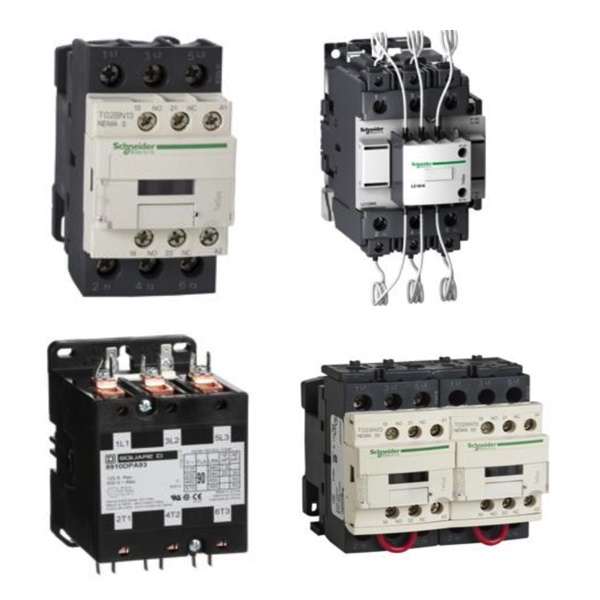Motor Starter Contactors

Motor starter contactors are electrically operated switches that control the power that drives an electric motor. They are meant to handle the high volume of electric power needed by motors and are just what their name suggests: devices that start and stop electric motors safely and efficiently, using electromagnetic forces to open or close their contacts.
A motor starter contactor is an electrically controlled switch similar to a relay. A motor starter is a contactor that also has an overload relay. A motor starter contactor applies voltage to a contactor coil to close the contacts and to supply and interrupt electrical power to the circuit. A motor starter employs overload relays to protect the motor from load surges by shutting it down to prevent overheating.
Moving beyond simple on/off switching, motor starter contactors can also be equipped with something called auxiliary contacts. These power no other devices, save the switched motor current. They exist for control and signaling purposes, providing feedback to control systems, or even as a part of safety interlocks that would prevent a motor's unintended operation.
FAQs
Do IEC contactors control electric motors and motor starters under electrical loads and also provide overload protection?
IEC contactors control electric motors and motor starters under electrical loads but typically do not provide overload protection, which is usually handled by separate overload relays.
Motor Control Basics
Motor control allows operational control of electrical motors in various environments.
Motor control circuits provide a safe way to operate electrical motors. Back when motor control circuits were in their infancy, it would have been common to see a simple disconnect switch that would be used to turn on and off a motor. Depending on the size of the motor and how much voltage was required, operating this disconnect would have been dangerous, with a very high possibility of arcing or electrocution. Not to mention that when the disconnect was actuated, the large amount of inrush current would have damaged the motor over time.
In today's motor control circuits, there are a few common pieces of hardware.
A circuit breaker is used to protect the motor and any hardware downstream. A contactor and an overload relay are connected together and function in tandem to allow for remote and safe operation of the motor. The contactor functions much like a relay, allowing for a smaller electrical circuit to remotely close the motor contacts, starting the motor. The overload relay is designed to protect the motor in the case of a prolonged overcurrent event. These two devices are wired in series, so that if the overload relay detects an overcurrent event, the contactor will open the motor contacts, shutting off power to the motor.
The other two most common types of motor control hardware are a soft starter and a Variable Frequency Drive (VFD).
Both of these devices function in a similar way to the motor circuit with some added functions. The soft starter is designed to reduce large inrush current to the motor upon startup. This “soft starting” of the motor will prolong its life and allow for safer operation. The VFD performs the soft start functions, but also allows for speed control of the motor. This speed control is critical in many different environments and has made VFDs one of the most common and safe to use motor control circuits today.

